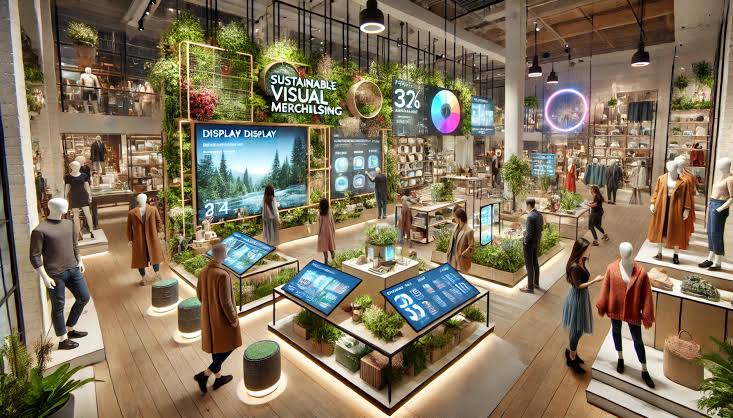Top 5 Store Fixture Innovations Driving Customer Engagement in 2024

Walk into any successful retail store today, and you’ll notice something different—it’s not just about the products anymore. It’s about how they’re presented. Smart retailers are using cutting-edge store fixtures and interactive retail displays to grab attention, keep shoppers engaged, and ultimately drive sales. In an era where online shopping is just a click away, these physical retail innovations are what make customers stop, explore, and buy in-store.
Here are the top 5 store fixture innovations that are transforming customer experiences right now:
- Smart Shelves with Digital Price Tags & AI Tracking
Why It Works:
Imagine shelves that automatically update prices, show product details when you pick something up, and even alert staff when inventory is low. That’s what smart shelves do—and they’re becoming a game-changer for retailers.
Key Features:
- Electronic shelf labels (ESLs) that change prices instantly (no more manual updates)
- RFID sensors that track which products customers pick up most
- Touchscreen displays for product demos and reviews
Real-World Example:
Walmart has been testing smart shelves that highlight discounts in real time. When a customer lingers near a product, the shelf display updates to show promotions or bundle deals.
- Interactive Mirrors in Fitting Rooms
Why It Works:
Fitting rooms are no longer just a place to try on clothes—they’ve become engagement hubs. Interactive mirrors let shoppers request different sizes, colors, or even share looks on social media without leaving the fitting area.
Key Features:
- Augmented Reality (AR) try-on for accessories and makeup
- Lighting adjustments to simulate different environments (daylight, evening, etc.)
- Instant checkout options so customers can buy without going back to the sales floor
Real-World Example:
Rebecca Minkoff’s stores use smart mirrors that remember customer preferences and suggest matching items, turning a simple fitting room into a personalized shopping experience.
- Modular & Movable Retail Displays
Why It Works:
Retailers need flexibility—what works today might not work next month. Modular store fixtures allow stores to quickly rearrange layouts for seasonal trends, promotions, or new product launches.
Key Features:
- Magnetic or snap-together panels for easy reconfiguration
- Wheeled displays that can be moved to high-traffic areas
- Customizable lighting to highlight featured products
Real-World Example:
Nike’s stores frequently use movable walls and display pods, letting them transform sections overnight for new sneaker drops or athlete collaborations.
- LED-Integrated Product Displays
Why It Works:
Lighting isn’t just for visibility anymore—it’s a sales tool. Dynamic LED retail displays create mood, highlight promotions, and even respond to customer movement.
Key Features:
- Color-changing LEDs to match branding or seasonal themes
- Motion-activated spotlights that follow shoppers as they browse
- Programmable light patterns for flash sales or limited-time offers
Real-World Example:
Apple Stores use subtle LED backlighting on their product tables, making devices look like they’re “floating” and drawing immediate attention.
- Gamified Checkout & Reward Stations
Why It Works:
The checkout area is often where engagement drops—but not anymore. Brands are turning payment zones into interactive experiences with games, rewards, and social media integrations.
Key Features:
- Spin-the-wheel discounts for instant savings
- Digital loyalty kiosks where customers can redeem points
- Self-checkout with personalized recommendations
Real-World Example:
Sephora’s Beauty Insider program uses touchscreen kiosks where shoppers can check rewards, get samples, and even try virtual makeup before paying.
The Future of Store Fixtures & Retail Displays
These innovations prove one thing: physical retail isn’t dying—it’s evolving. The stores winning today are those using store fixtures and retail displays to create experiences that online shopping can’t match.
What’s next? Expect:
- Holographic product displays that don’t require physical inventory
- AI-powered shelves that restock themselves
- Biometric feedback displays that adjust based on customer reactions
Final Thought
Retailers who ignore these store fixture trends risk becoming irrelevant. But those who embrace them? They’re turning casual browsers into loyal customers—one innovative display at a time.
Which of these innovations have you seen in stores lately? Did they make you more likely to buy? Let us know in the comments!
